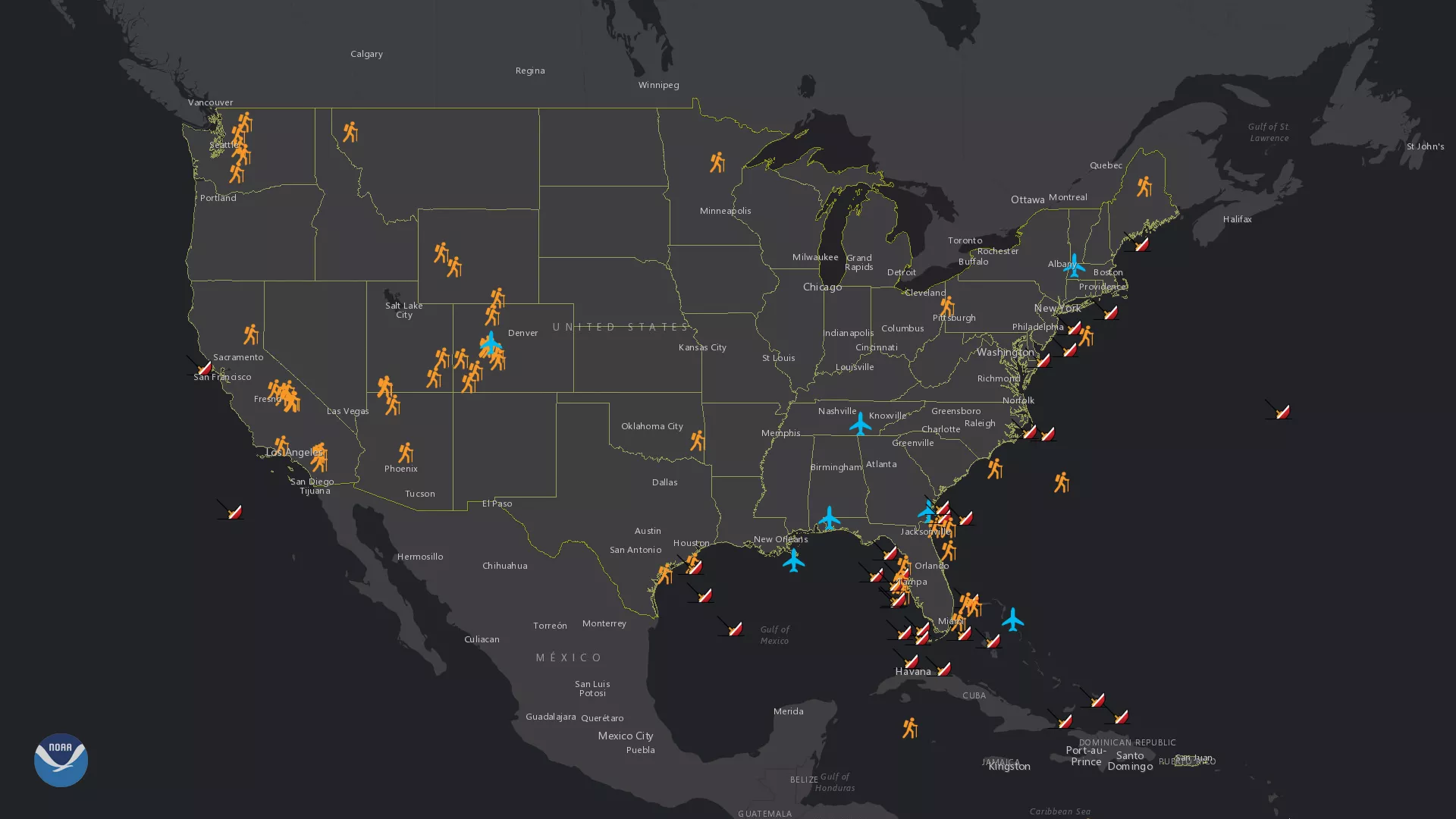
Happy SARSAT Beacon Awareness Day!
The Search and Rescue Satellite Aided Tracking (SARSAT) system is recognized by emergency responders and related governmental organizations every year on April 6 because it tracks 406 MHz distress signals from transmitters and beacons from around the globe. In 2019 alone, SARSAT potentially saved more than 421 lives in and around the U.S. and its territories.It is also known as the COSPAS-SARSAT program in collaboration with our international partners—with COSPAS being a Russian acronym for COsmicheskaya Sisteyama Poiska Avariynich Sudov, meaning “Space System for Search of Distress Vessels”
NOAA’s fleet of polar-orbiting and geostationary satellites—such as the JPSS and GOES-R series—is part of a network of international spacecraft that are designed to detect and locate distress signals from anywhere on Earth. Additionally, signals can originate “from emergency beacons aboard aircraft, boats, and fromhandheld Personal Locator Beacon (or PLBs).”
Two recent events show the power of the SARSAT system during weather-related emergencies:
On January 27, 2020, there was a small aircraft in distress in Colorado after two people aboard experienced technical difficulties with equipment in snowy weather, forcing them to parachute out and the plane to crash-land. The Air Force Rescue Coordination Center, along with the Federal Aviation Administration, were alerted by the Emergency Locator Transmitter aboard the aircraft and sent ground teams from the Pitkin County Sheriff’s Department and Mountain Rescue-Aspen to retrieve the uninjured passengers from the crash site.
Also, a hiker in Baxter State Park in Maine was able to deploy a PLB on October 6, 2019, when he lost sight of the predetermined hiking trail in low-visibility conditions. The Air Force Rescue Coordination Center received the alert, contacted the Main Department of Public Safety, and coordinated an effort to rescue the hiker at the last transmitted position. Through these efforts, the hiker was found and transported to safety.
For further information about SARSAT and its partner operations, visit NOAA’s interactive website featuring past rescues through the use of this system throughout North America and the world. To register your own PLB with SARSAT, please visit www.sarsat.noaa.gov.
